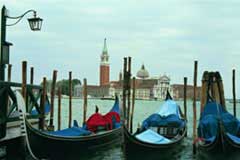 |
Monday
1. Guatemala
My first day of travel was to the (in)famous Guatemala. Here, I did not expect happiness or excitement...
First, it is good that you know that the wars are now over in Central America; there is now very little political harassment, although one has to be careful and exercise reasonable precautions as a result of the levels of "delincuencia."
Until a few years ago, however, the region was at war, in Guatemala, until 1996. Guatemala was the hardest hit, around 200,000 civilians killed, many more displaced, almost all by the army.
Very egregious problems remain with respect to military violation of human rights in Guatemala, but not like in the past.
The military has been well trained to protect tourists, one one of Guatemala's principal industries. There are, however, a few bandidos running around Guatemala that we want to steer clear of, mainly by staying in touristy areas, which are more heavily protected.
Some civilians were placed in in a Guatemalan concentration camp in Nebaj, en El Quiche, the center of the infamous Ixil Triangle, the summer of 1988. Later, I learned that the "youngest and prettiest females" in these camps were reserved for ual abuse by officers. This made me angry. I did not walked out of that country the same person.
This brought me to wondering how El Salvador would be like...
Tuesday
2. El Salvador
|
|
- Population:
5.8 million
- Population density:
451 persons per square kilometer
- Ethnic groups:
94% mestizo, 5% Indian
- Language:
Spanish
- Economy:
food and beverages, textiles, petroleum products
- Per capita GDP:
$2,500 per year Life expectancy: 65 years (male), 70 years (female)
Throughout the 1980s, the Central American nation of El Salvador was the scene of an intense, dirty civil war. The country's US-backed government and military were accused of serious human rights violations.
As my second stop, I was more prepared to learn information about this country that I had never known before.
- 61.2% of rural dwellers lived in poverty before the earthquakes of January and February 2001. Now 66.4% are poor, of which 35.8% are extremely poor.
- The urban area only fairs slightly better. Before the earthquakes, 37.6% of people in urban El Salvador were poor. That number is now 40.2%, with 14.5% living in extreme poverty.
Even so, here is a laundry list of a few successes of the past 20 years:
- Repopulations from Honduras, Nicaragua, Costa Rica, Panama and urban El Salvador to communities in the war zones of El Salvador. People demanded their right to live in their places of origin, and people from around the world, including the United States, walked with them to offer the protection of solidarity.
- The Peace Accords brought a negotiated end to the war, but in order to implement the largest part possible of the Accords, international and national pressure was necessary. Together in many countries we worked with our Salvadoran brothers and sisters to make sure the repressive police forces were dissolved and to ensure that the Land Transfer Program was completed, giving land to 35,000 formerly landless peasants. (This land came with a cost - a 30 year mortgage and loans in order to produce)
| Even with these few, optimistic facts, we should be able to see that El Salvador is not a very happy place...
Wednesday
3. Nicaragua
Nicaragua is an extremely poor country, with an estimated per capita income of $441. The economy is predominantly agricultural, dependent on sugar, beef, coffee, and seafood exports, with some light manufacturing. Hurricane Mitch had a devastating effect on the country, including its economic infrastructure.
As a traveled there, I realized how true this research was...
The Government's human rights record improved in a few areas, but some serious problems remained. Some members of the security forces committed extrajudicial s. Police beat and otherwise abused detainees. There were allegations of by the authorities. Prison and police holding cell conditions remain harsh. The security forces arbitrarily arrested and detained citizens, although the Government effectively punished some of those who committed abuses...
With the exception of some peace commissions, human rights groups operated without government interference. Major organizations included the Permanent Commission for Human Rights (CPDH), the Nicaraguan Association for Human Rights (ANPDH), and the Nicaraguan Center for Human Rights (CENIDH). The CENIDH continued to take political positions reflecting strong Sandinista influence, limiting the objectivity and impact of its reports. In July 1997, a small successor organization to OAS/CIAV, the OAS Technical Cooperation Mission (TCM), opened at the request of the Government and continues to operate.
Excuse the straight facts, but I am appalled by what I have found. I expected to find at least a LITTLE more than hardships here in Central America!

ignore
|

